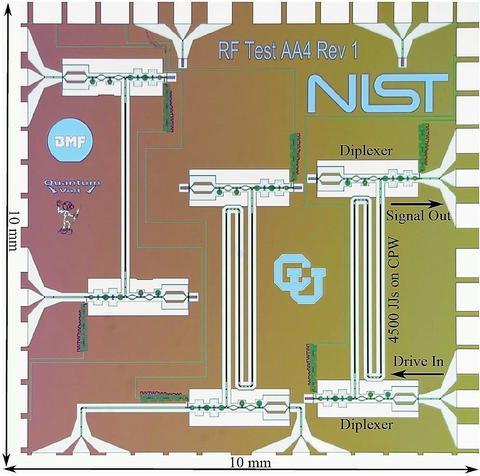
NIST, in collaboration with CU Boulder faculty, published a paper titled: “RF Josephson Arbitrary Waveform Synthesizer with Integrated Superconducting Diplexers” demonstrating results that show a significant step toward a broadband, integrated, quantum-based microwave voltage source with useful power above -30 dBm.
This milestone creates new opportunities for improving measurements of high-accuracy RF voltage and power for modern high-speed communications components and instruments. NIST’s goal is to advance quantum-based standards for RF communications to eliminate costs and overhead in calibration and traceability chain measurements by providing self-calibrated, quantum-based standards and automated measurement capability to communication and instrument manufacturers.
The team is developing a quantum-defined superconducting programmable voltage source for generating microwave-frequency waveforms. The voltage source is an RF Josephson arbitrary waveform synthesizer (RF-JAWS) that utilizes a superconducting integrated circuit that is cooled to 4 K and is composed of an array of 4500 Josephson junctions. The researchers incorporated on-chip superconducting diplexers and integrated them with the RF-JAWS circuit to achieve an open-circuit signal of 22 mV rms at 1.005 GHz, which is a 25% increase in state-of-the-art. The use of integrated filtering enables 25% larger microwave amplitudes compared to the state-of-the-art thanks to a broader passband and lower loss. Measurements of the new circuit showed that it correctly synthesized the RF waveform with a signal amplitude that was based on quantum effects.
Paper Authors:
Akim A. Babenko, Nathan E. Flowers-Jacobs, Gregor Lasser, Justus A. Brevik, Anna E. Fox, Paul D. Dresselhaus, Zoya Popović, and Samuel P. Benz

